
Spring 2024 Extended Day Program in preparation for
The friday, june 14, 2024, nys regents exam in , english language arts (ela).
Instructor : Mr. Jacob Sugar
aka: "Sugar"/"Sucre"/"Azucar"
Text: 646-632-5563
Week #1 - Class Date - Topic ( Materials Posted Below)
Wednesday - 2-14-24 - Introduction to Class Mindset (WINS) and the NYS Regents in E LA
Friday - 2-16-24 - Multiple Choice Workshop #1 - Text Highlighting strategy
Week #2 - Class Date - Topic & Materials (Click for materials!)
Wednesday - 2-28 - Introduction to Part 2: The Argument Essay - Workshop #1
Friday - 3-1 - Part 2: Argument Essay #1 - Co-Write
Should Pets Be Allowed In the Workplace?
Week #3 - Class Date - Topic & Materials
Wednesday - 3-6 - Introduction to Part 3: The Literary Analysis Essay - Workshop #1
Dracula - by Bram Stoker
Friday - 3-8 - Multiple Choice Workshop #2 - Eliminating Wrong Answers
Week #4 - Class Date - Topic & Materials
Wednesday - 3-13 - Part 2: Argument Essay - Workshop #2 - The Body Paragraph(s)
Friday - 3-15 - Writing Argument Essay #2
Should self-driving cars replace human drivers?
Week #5 - Class Date - Topic & Materials
Wednesday - 3-20 - Part 3: Literary Analysis Essay Workshop #2 - The Central Idea
Friday - 3-22 - (Parent Teacher Conferences - No Class)
South of Broad by Pat Conroy
Week #6 - Class Date - Topic & Materials
Wednesday - 3-27 - Multiple Choice Workshop #4 - Applying our two strategies
Friday - 3-29 - Easter Holiday (No Class)
Week #7 - Class Date - Topic & Materials
Wednesday - 4-3 - Part 2: Argument Essay - Workshop #3 - The Counter-Claim
Friday - 4-5 - Writing the Argument Essay #3
Should College Athletes Be Paid?
Week #8 - Class Date - Topic & Materials
Wednesday - 4-10 - Eid al' Fitr (No Class)
Friday - 4-12 - Part 3: Literary Analysis Essay Workshop #3 - Paragraph 2 - Literary Devices - Language Use
Alone by Admiral Byrd
Week #9 - Class Date - Topic & Materials
Wednesday - 4-17 - Multiple Choice Workshop #5 - Poetry
Friday - 4-19 - Part 3: Literary Analysis Essay Workshop #4 - Poetry
Spring Break!
Week # 10 - Class Date - Topic & Materials
Wednesday - 5 -1 - Part 2 Argument Essay - Workshop #4 - Efficient Use of Evidence
Friday - 5 - 3 - Write Argument Essay #4
Are AI [Artificial Intelligence] devices beneficial to children?
Week #11 - Class Date - Topic & Materials
Wednesday - 5-8 - Part 3: Literary Analysis Essay Workshop #5 - Language Use
He and I by Natalia Ginsburg
Friday - 5-10 - Multiple Choice Workshop #6 - Informational Text
Week #12 - Class Date - Topic & Materials
Wednesday - 5-15 - Part 2: Argument Essay - Workshop #5 - Explaining Our Ideas
Friday - 5-17 - Writing Argument Essay #5
Should cash currency be eliminated?
Week #13 - Class Date - Topic & Materials
Wednesday - 5-22 - Part 3: Literary Analysis Essay Workshop #6 - Why We Read Literature
Friday - 5-24 - Multiple Choice Workshop #7 - Self-Assessment A
Week #14 - Class Date - Topic & Materials
Wednesday - 5-29 - Multiple Choice Workshop #8 - Self Assessment B
(3) Multiple Choice passages from the January 2024 ELA Regents exam
Friday - 5-31 - Memorial Day Weekend (No Class)
Week #15 - Class Date - Topic & Materials
Wednesday - 6-5 - Part 2: The Argument Essay - Workshop #6 - Self-Assessment
Annotate ( 4 ) Informational Text passages from the January 2024 ELA Regents exam (when available )
Friday - 6-7 - Independent write of Argument Essay #6
Should English curricula teach the classics?
Week # 16 - Class Date - Topic & Materials
Wednesday - 6-12 - Part 3: Literary Analysis Essay Workshop #7 - Self-Assessment
Complete the Part 3 Literary Analysis essay from the January, 2024 Regents exam
Friday, June 14, 2024 at 9:00AM - NYS Regents in English Language Arts
Academia.edu no longer supports Internet Explorer.
To browse Academia.edu and the wider internet faster and more securely, please take a few seconds to upgrade your browser .
Enter the email address you signed up with and we'll email you a reset link.
- We're Hiring!
- Help Center

Patterns, Symbols and Themes in Bram Stoker’s Dracula

2014, Patterns, Symbols and Themes in Bram Stoker’s Dracula -by Ferenc Zselyi
Bram Stoker's novel, Dracula (1897) is a discourse on the visible and the invisible, on the seemingly good and the primary evil that is, also, "good"; on the effable and the ineffable. The beautifully written end-of-the-century prose depicts horror and "disgust" and their perception only to show how much of the horror is coming from within the human soul. The long narrative is constituted by a complex of symbolic oppositions that make this novel a good, interesting and/or exciting reading for everyone. This was the first Modernist novel written in English literature - it has nothing to do with "vampires" and ghosts who/that are "only" signifiers and/or symbols or emblems in this discourse. Stoker's novel is the predecessor of Yeats' symbolism and Joyce's time travel in Ulysses.
RELATED PAPERS
Joshua Wilwohl
Ljubica Matek
Postcolonial Text
Michael Hutcheson
M.A. Thesis
Claudio Zanini
H-Russia, H-Net Reviews
Svitlana (Lana) Krys
Victorian Literature and Culture
Dejan Kuzmanovic
Gothic Studies
Whitney S May
Palgrave Communications
Cecilia Lasa
Adrienn Castillo García
Megen de Bruin-Molé
Bram Stoker's Dracula: The Critical Feast, An Annotated Reference of Early Reviews and Reactions, 1897-1913
Edebiyat Fakültesi Dergisi / Journal of Faculty of Letters
Neil McRobert
Victorian Literature and Culture 41.2 (June 2013): 391-407
Anthony Salazar
Buscadora Quantica
Bulletin of the Transilvania University of Brasov. Series IV: Philology and Cultural Studies
Magdalena Grabias
Ashley Szanter
Master's Degree dissertation
Wadie Touahria
College Literature
jamil khader
Norbert Spehner
Mary Wolverton
RELATED TOPICS
- We're Hiring!
- Help Center
- Find new research papers in:
- Health Sciences
- Earth Sciences
- Cognitive Science
- Mathematics
- Computer Science
- Academia ©2024
Dracula: Themes ( OCR A Level English Literature )
Revision note.

English Content Creator
Dracula: Themes
Exam responses that are led by key themes and ideas are more likely to reach the highest levels of the mark scheme. Exploring the ideas of the text, specifically in relation to the question being asked, will help to increase your fluency and assurance in writing about the novel.
Below are some of the key themes that could be explored in Dracula. This list is not exhaustive and you are encouraged to also explore any other ideas or themes you identify within the novel.
Good vs evil
Gender roles, science vs superstition.
The fear of the unknown/the “other”
It is really important that you develop the skills to find your own ideas and arrive at your own meanings and interpretations of the text. Try to take a more exploratory and discursive approach to your reading of the novel, as the examiner will reward you well for this approach. For instance, you could begin to develop your own interpretations by using sentence starters such as: “Stoker may have used the character of Mina to highlight ideas about…”

The most significant and enduring theme in Dracula is the idea of good vs evil. This theme is present throughout the novel. It is evident not only as a struggle between characters, but also as a reflection of wider societal and moral concerns during that time. It is a reminder of the continuous battle between light and darkness, virtue and corruption and the longstanding belief that goodness can always triumph over evil.
Knowledge and evidence:
The idea of good vs evil can be seen through the main characters in the novel and their actions:
There is a clear divide between those who do good and those who commit evil
Count Dracula is the epitome of evil and he is surrounded by darkness and the supernatural:
The description of his body and his movements can also be linked to the idea of evil
His appearance is described as unnatural and almost satanic, with pointed ears and flaming eyes
He survives by preying on the living and by sucking their blood, which goes against nature and purity, rendering him the opposite of all that is pure and good:
He poses a significant threat to society and to everything that is seen as natural
Dracula’s ability to control “children of the night”, such as wolves, reinforces the idea that he is a supernatural being with powers and abilities that are considered unholy and in direct opposition to the church
“Good” in the novel is represented by heroes such as Jonathan Harker, Mina Harker, Dr Seward and Professor Van Helsing:
Their desire to restore good and protect each other is what motivates them to pursue Dracula and ensure that he is destroyed
They have a strong sense of honour and duty and, as a result, they are a true representation of good, decent, moral people
In addition, the protagonists use their blood to cure, heal and as a force for good, which is in direct contrast to what Dracula uses blood for
Van Helsing’s use of religious objects reinforces the idea that goodness can be found in religion, which will ultimately triumph over evil:
It is these characters who feel compelled and obligated to save Lucy’s soul by driving the stake through her heart
If Dracula traps souls and condemns them, then these characters free them and bring them peace
Stoker also uses religious imagery and symbolism to represent the battle between good and evil:
Items such as crucifixes, communion wafers and garlic are used as weapons against vampires and evil
This emphasises the power of faith and religion when faced with forces that are deemed as unholy
Dracula’s physical appearance and mannerisms have strong links to Satan and the image of Satan tempting people to serve and worship him
Dracula is described as one who draws people to him, such as Renfield, to worship him and commit heinous crimes
In contrast to this, Van Helsing could be considered the direct opposite of Dracula by being an agent of God and a bestower of mercy and goodness
What is Stoker’s intention?
Stoker highlighted the importance and power of religion
He is suggesting that religion has a firm place in society despite the advancements of science and technology:
The vampires were powerless against religious symbols and objects
Lucy’s soul was saved, not by science or technology, but by religion
Stoker was trying to highlight the importance and significance of religion to a society who were beginning to question its values. He uses religious imagery from the start of the novel and this is embedded throughout:
When Jonathan is handed a crucifix by a local, he does not fully understand the importance of it but acknowledges that it gives him “comfort”
This reflects the views of a society that was embracing science and development but also had strong roots in religion
When science and medicine is not proving to be effective, Van Helsing turns to religion and superstition to find the solution
As a result, even though Lucy becomes part of the un-dead, he is able to free her soul, which brings her peace and salvation
Stoker deliberately chose settings that tied into the idea of good vs evil:
The ruins of Whitby Abbey inspired Stoker to write his novel and the ruins have an eerie and supernatural history of their own

The role of men and women is a strong theme in Dracula and is linked to power and identity as well as purpose. Stoker’s use of diary entries allows us to view the events in the novel from all perspectives and gives us insight into the imbalance of power and the tight restrictions through which women had to navigate.
The character of Mina Harker is an example of female virtue:
Her relationship with those around her, including Lucy Westenra, exemplifies a caring and kind nature that would be associated with a mother or nurturer
Mina does not tell anyone about Lucy’s sleepwalking as she is afraid it may ruin her reputation as a chaste and virtuous woman
Mina rushes to be by her fiancé’s side and makes it her purpose to help heal and cure him:
She takes her role as his wife seriously and dedicates herself to developing skills such as shorthand and typewriting in order to help her husband
When Dracula attacks Mina and they exchange blood, her reaction is to shout “unclean” as she feels she has been tainted and corrupted:
Mina’s white nightdress being tainted with blood symbolises the idea of her becoming a fallen woman
However, she rejects this and strives to maintain her role as a wife and a nurturer
However, Mina also represents the idea of a modern woman as she shows traits that were considered as masculine for that time:
Van Helsing describes her mind as “masculine”
Mina is also the one who gathers all of the evidence in a coherent way and is vital in helping the others capture and kill Dracula
However, even though her role is essential in Dracula’s downfall, the male protagonists decide to withhold information from her as they feel it is not good for a female’s sensitive disposition to hear these things:
Therefore this places Mina back in the role she was expected to carry out
Lucy Westenra, while having many similar virtues to Mina, is also an example of what happens when a woman is desired too much by men due to her physical beauty:
When Lucy becomes unwell, she turns to Dr Seward and then Prof. Van Helsing for help and protection
She feels safe when she knows they are there and feels vulnerable when they are not
Lucy falls from her virtuous position when she is bitten by Dracula and becomes a part of the “undead”:
Her allure is heightened when she becomes a vampire as she tries to lure Arthur into her embrace and kiss him
Her actions are seen as evil and abhorrent as she is behaving in a way that is not acceptable
The men then decide to destroy her in order to free her soul and restore her virtue and chastity:
Once again, it is the male characters who come to her aid
It is the male characters who are considered to be the saviours
Like Mina, Lucy also possesses “modern” characteristics:
This can be seen when she expresses her sadness over having to reject two men and her desire to have multiple partners
Harker’s actions in the castle are described as brave and he is praised for his courage:
His bravery and masculinity is evident as he decides to escape the castle and leave “as a man”
However, he appears frail after he escapes as he cannot fully believe what he witnessed in Dracula’s castle
As a result, he doubts his own mind and ability, which emasculates him
His manhood is restored when Van Helsing validates his experiences with Dracula and it is evident that Harker no longer fears the vampire
He is a key character in Dracula’s demise and takes a proactive role in finding the boxes of dirt
Dr Seward represents logic and reasoning in the novel:
He does not initially believe what Van Helsing is telling him and believes that there is a logical explanation to what is happening
He does not show emotion, even after being rejected by Lucy or when she dies
He is a modern man and this can be seen through his use of a phonograph to record his diary rather than the more traditional use of pen and paper
Van Helsing is described as a “man of power” by Mina Harker
Van Helsing’s strong belief in the supernatural and religion make him the direct opposite of Dracula:
Dracula uses “children of the night” to do his bidding and uses objects that are normally associated with uncleanliness such as his boxes of dirt
Whereas Van Helsing uses pure religious imagery such as crucifixes and holy water in defence
Van Helsing unites the men and leads them in their mission to destroy Dracula
Van Helsing combines science and religion, as science does not save Lucy, but his knowledge of religion saves Mina
Each of the male protagonists in the novel represent a masculine ideal:
Dr Seward appears calm and rational in the face of madness and supernatural occurrences
Dr Van Helsing represents a strong faith in religion and in doing good
He is a leader and is the direct opposite of what Dracula represents
Jonathan Harker represents a youthful bravery and a strong sense of duty to his responsibilities, including his wife
Arthur Holmwood represents the upper English classes and the values that are traditionally associated with people of that status, such as honour, valour and strength
Quincey P Morris represents old fashioned gallantry and bravery and he plays a key role during the hunt of Dracula
The novel reflects the gender roles and expectations of the latter part of the Victorian era
These consisted of strict expectations enforced by society and the divisions between the roles of men and women:
During the late 19th century, “good” women were expected to be chaste and virtuous and their main purpose was to become wives and mothers
However, in comparison to women, men were expected to exude courage and strength. The expectation of men was that they would be protectors and providers
Masculine ideals during the period the novel was written in also encompassed logic, reasoning and the mastery of technology and invention
Both women in the novel possess characteristics that are traditionally associated with being female, such as being natural nurturers and having a strong desire to be married:
However, they also show characteristics that are not normally associated with women, such as Lucy’s flirtatious mannerisms and her desire to have more than one suitor
Also, Mina’s perception, bravery and diligence are all characteristics that would have been traditionally associated with men
It is interesting to note that Lucy is killed by Dracula and Mina is isolated by the men in the group
This could reflect Stoker’s views on women who try to break out of the traditional roles assigned to their gender
For a more detailed analysis of the historical context of Dracula, please refer to the Context Revision Notes
Please remember that while incorporating contextual factors is important, this should not be the main focus in your response. Do not rely too heavily on Stoker’s possible intentions, but consider them to back up your points when considering the themes of the novel. For example, Mina may represent some of the feminine ideals of the late Victorian era, but this does not mean that a significant part of your essay will be about the role of men and women. You are not writing a history essay!

It is evident throughout the novel that science is in conflict with superstition, and this can be seen through characters and their reactions to the events that were unfolding.
At the start of the novel, villagers in Transylvania are deeply superstitious and their panic and fear is evident when they realise where Harker is headed:
Harker rejects the innkeeper’s wife’s plea to delay his journey and not to travel on the eve of St George’s day, as she believed that “all evil things will have full sway”
He takes the crucifix that he is given but does not understand its significance, though he does feel that it offers him some comfort
He feels uneasy when the villagers make the sign of the cross as his coach departs in order to ward off the evil eye
He does not truly understand what is happening during his stay at Dracula’s castle and later believes that he has hallucinated the events because he cannot logically justify what he has seen:
Harker is obviously a man of logic and reasoning
However, his mind is conflicted at the start of the novel as he cannot come to terms with the supernatural events unfolding before him
Dr Seward and Van Helsing are men of science and technology, which, it could be argued, is why Lucy did not survive:
Their initial reaction to Lucy’s illness was to conduct blood transfusions in order to keep her alive
When Dr Van Helsing suspected it could be vampirism, it was too late for Lucy
Dr Seward vehemently believed in science and found it difficult to comprehend anything related to superstition and folklore
Therefore, he could not understand some of Van Helsing’s actions in relation to Lucy’s treatment
Eventually Van Helsing uses knowledge of folklore and superstition to try and defeat Dracula:
However, the men had to be convinced and had to witness Lucy’s transformation into a vampire in order to believe
Science is then rejected for more traditional methods such as religious symbols and folklore
Science and technology were growing in popularity during the late 19th century, and the characters reflect the attitudes and beliefs of that time:
Any scepticism highlights the tension felt between superstition/religion and the growing popularity of science
The 19th century was a time when technology and advancements were moving at an unprecedented rate
This can be seen through a number of characters, such as:
Mina’s keenness to learn shorthand and to typewrite. She also travels with a portable typewriter
Dr Seward and Lucy both own a phonograph and Dr Seward uses it to record his thoughts and feelings
Stoker could be deliberately attempting to highlight the importance of religion, tradition and folklore during a time when these old ideals were being rejected and replaced by logic and science:
Science and logic did not save Mina Harker or destroy Dracula, but religion and tradition did
Fear of the unknown/the “other”

The idea of the “other” and the fear of the unknown is a theme that amplifies and increases the fear that characters have for Dracula.
Dracula is described as physically different from his English guest, Harker:
In his diary entries, Harker comments on Dracula’s physical strength and the language that Harker uses suggests that he felt intimidated by this
He states that Dracula could have “crushed” his hand if he chose to
Dracula’s physical appearance is also described by Harker, who has a “horrible feeling” when Dracula leans close to him
This could be perceived as Harker feeling uncomfortable around someone whose characteristics are unfamiliar and unknown to him
Dracula’s features are so significant and different that Jonathan Harker is able to recognise him in London
This could highlight that, even though Dracula is now in England, he is still an outsider and does not belong
The character of Dracula is also the embodiment of everything that is unholy and unclean, which separates him from the rest of the characters:
He consumes the blood of living people for sustenance and survival
He is weakened by sunlight and must sleep in a box of dirt from his homeland in order to survive
The dirt from his homeland could also signify how he does not belong and ties into the idea of him being the “other”
He is weakened and powerless against religious symbols, which further isolates him
It could also be argued that Van Helsing can be seen as another example of the “other”:
Although Van Helsing is European, he is not English and his accent and mannerisms are different to everyone else's
However, his belief system is the same as the other characters around him
He is a man of science and logic, but also possesses Christian values which gives him a sense of belonging
He is recommended by Dr Seward and therefore already has a good reputation and a sense of belonging
During the time period in which the novel was written, there was often a fear of people who seemed “exotic” or different
The character of Dracula could be viewed as representing those who wished to invade and overthrow the British Empire for their own gain:
Dracula used his power and wealth to move to London
He used his evil to infect and kill Lucy, which could be interpreted as an invasion against British morals and ethics. He then attempts to do it again with Mina
One of Dracula’s bases was in Piccadilly, which could represent a direct invasion of the capital of England
Dracula symbolises the foreign and the exotic, putting him in opposition with safety and familiarity, and so he is presented as the direct opposite of all that is safe and good
You've read 0 of your 10 free revision notes
Get unlimited access.
to absolutely everything:
- Downloadable PDFs
- Unlimited Revision Notes
- Topic Questions
- Past Papers
- Model Answers
- Videos (Maths and Science)
Join the 100,000 + Students that ❤️ Save My Exams
the (exam) results speak for themselves:
Did this page help you?
Author: Nadia Ambreen
Nadia is a graduate of The University of Warwick and Birmingham City University. She holds a PGCE in secondary English and Drama and has been a teacher for over 10 years. She has taught English Literature, Language and Drama across key stages 3 to 5. She has also been an examiner for a leading exam board and has experience designing and delivering schemes of work for AQA, Edexcel and Eduqas.
| | eBook! |
Download Ari Nusrat's eBook of this essay "From Prince to Dracula" for off-line reading! And... Watch George Angelescu's video " Vlad the Impaler–The True Story of Dracula " on C21ETV!
- George Angelescu's video " Vlad the Impaler–The True Story of Dracula ", presented by C21ETV! (50'47", 194MB)
- Another *very* nice site is Dracula vs Vlad Tepes - Myth and History , by three(3) Romanian students, in both Romanian and English. This one is not only factual and well thought out, but it is candy for the eyes as well as food for the brain. The English is not perfect, but who cares? It's just plain fun!!! Recommended!
- " Vlad the Impaler: Dracula's Real-life Persona ", by Joseph Geringer , a prolific author on the Crime Library web-site, is definately one of the better articles written for the layman anywhere online! It comes in eight(8) "chapters": Man More Than Myth ; Where East Meets West ; Among the Ottomans ; Viovode ; The Impaler ; Staggering the Turks ; A Brother's Treason ; Gotterdamerung ; and an Epilog as well as bibliography . Masterfully pulls together many of the most common resources. Also recommended!
- Elizabeth Miller, a professor of English and a respected authority on all things " Dracula ", has a series of essays worth looking at, including one focusing on the Order of the Dragon.
- " VLAD TEPES - The Historical Dracula " is a good example of how to compile various works together into a concise, seemless form which is in many ways arguably better than the original sources. The editor and site author, Don Linke, besides presenting the material in a visually appealing and effective manner, also does a good job of giving proper citations of his sources.
- Castle of Spirits has an original article, " Vlad Dracula, The Impaler " which is pretty good and worth reading. Includes the mystery of his grave.
- Dagobert's Revenge has another nice English-language article about the history of Vlad and his family history called " Profiles in Royalty: Vlad Dracula " by Nick de Vere ( with Professor Raymond McNally ). Though " western ", it is nicely balanced.
- " Vlad Dracula: An intriguing figure in the fifteenth century ", A biography of Vlad the Impaler by Benjamin Leblanc. Here it is published on an otherwise uninteresting and forgettable vampire site. I will link to a better source when I locate one...
- In some ways a nicer version of this document by Benjamin Leblanc, in French this time, is " Vlad Dracula, Waida Princeps et Waiuoda Walachiae Transalpinae, 1431-1476 " on " De Cadaveris Ambulatoriis - Dossier sur Vlad Dracula ". Not only is it more esthetically pleasing, but I like it for its much more thorough ( mais oui, en français! ) bibliography .
- Andrew Modeen's CastleVania Anthology pages has a section entitled " In Search of Dracula " (neither the book, nor TV show) which not only includes some good historical details, but an example of a Romanian peasant ballad as well!
- On the Romanian Travel site is " Dracula, between Legend and Reality ", an appendix to a broader survey of Romanian history.
- Though the Nord'Est page " Dracula - history and fiction " is part of a site designed to attract customers for tours , it does offer up some noteworthy points of historical interest.
- If you are able to get through the outward retoric, there is useful content to be taken from the article " Dracula was a Christian " on " 666 - The Antichrist's Almanac, Online Edition ". ( NOTE : The Editor is not endorsing this site in general, and does not agree with the conclusions of its thesis. While it does contain facts which are true in isolation, it is here only as an alternate view point, and source for only the most descriminating reader. )
- Another source of information, once again coming from a rather repugnent source(!), is " CHAPTER 36 : THE MELTING POT - ROMANIA, BULGARIA, ALBANIA AND GREECE - Part i, Romania ", from a book by Arthur Kemp entitled " March of the Titans - A History of the White Race ". WARNING: This material comes from a site hosted by Don Black and Stormfront, a White Pride/White Nationalist organization. By NO means do I believe in or advocate racism or white-supremecy! Please do not send me hate mail. I am loath to include this source here except for that some of the historical content included therein may be of some use to the intelligent, decerning reader. If someone could point me to a better source for comparable information, I will gladly replace this with it. In the meantime, ... use at your own risk!
- Adrian Axinte's " DRACULA: between myth and reality " examines the problem of our intertwined perceptions of fact and fiction.
- The World of Royalty has a site entitled " The Real Prince Dracula ". It doesn't cover anything that hasn't already been on other sites, but it does host a plethora of links useful for further reading.
- " ' This Man Belongs to Me ' The Life and Deaths of Vlad the Impaler ", by David Carroll, an original essay on the origins of our modern myth. Includes bibliography.
- The Vlad Dracula Timeline - It's yet another " vampyr " site, but it is brief and does contain some useful information.
- " Who Was The Real Dracula? A History Of Vlad The Impaler ", by Jim O'Rear, is on yet another horror site, but it's a decent article nonetheless.
- " Dracula Joins Star Trek: Vampire Folklore in the Space Age ", by Jimmy Gonzalez, is a short examination of myth and legend, and how it has come to mean what it does in our modern age, ...while the " Vampire Origins " section on Monstrous.Com examines the causes.
- The ParaScope.Com has a good section on the origins of the Vampire myth – it is off-line now for redesign, but is supposed to return in early 2002...
- This student's online paper, " Vlad Dracula , the prince who became ruler... eventually" ( if I may paraphrase ;) is short and focuses mostly on legends and anacdotes about his eleged cruelty, though it does mention a few details not usually found in most other online treatises. She cites and lists her sources. ( a student site, so don't expect it to survive long. )
- " Vlad the Impaler ", an article on Unicorn Garden's "Illustrated Guide to Vampires" is short and comparatively tame. Could be suggested reading as a brief introduction for those with only a casual interest, and for young children – no worse than Fairy Tales of the Brothers Grimm.
- North Park University has a site entitled " The Story of Vlad III Tepes, the REAL Dracula ", by Mircea Arsenie. It is short, but includes citations, footnotes, and bibliography.
- Regarding Romanian tourism as a source of info :
- Here's an historical page about Prince Vlad and the so-called Dracula's Castle from the Romanian Tourist Board, with links to Romanian castles, monestaries, and other points of interest. (English)
- Of contraversy with some Romanian citizens, the sites of Draculea , Dracula Land , and DracuLand are all obviously intended to draw on the ignorance of the ordinary western tourist and moronic neo-cult-gothic wannabies (hey!, don't blame them, it's (y) our own stupid fault!) ;P Nevertheless, they do also offer useful info for the serious student looking to take their 1st trip into the region.
- " In Quest of the Vampire Count " - a site describing a 4-day tour, and representative of what is both right and wrong with modern tourism, is disappointing in its numerous post-Stokerian references, but does provide some nice pictures of many wonderful historical sites in Romania.
- Warning–Editorial!: Not one to necessarily promote the commercial exploitation of valued historical sites ( atleast, not carelessly so; and then when so, only in the hope that tourism should provide the money necessary for the conservation and preservation of the same ), and having not yet the personal experience of my own, I cannot recommend, or say with authority, that any particular tours company or agency is better or worse than any other if you do decide to go and see Romania for yourself. However, I did recieve ( 14-12-2001 ) an unsolicited testimonial from a one Shawn Mackey , about her trip to Romania, praising the knowledge and sensitivity to subject matter by "Otto" of Satu Mare, her tour guide and owner of Transylvania Inc. (aka Undiscovered Lands ), if the authenticity of content in her correspondence is to be believed. I cannot make a judgement on that. I am not personally recommending them, per se – it is merely presented here for your information. I also provide here a link to her original correspondence for your descriminating inspection. ... My own personal-favourite travel agency, Rick Steves' Europe Through The Backdoor Tours , does not yet provide a "good" package to Romania – much as they uncharacteristically do not provide a good travel package to Finland (!), which is quite a-typical for them. "Eastern" Europe is a relatively recent addition for them, and I expect them to offer some very good "backdoor" trips in the near future. In this case, * I * can and would (will,do) recommend *them*! (Ed., -MLW)
- The Web-site for the Romanian Studies Program at Eastern Nazarene College not only includes a short article about Vlad Dracula , but also has information about the history and culture of the country.
- " The History of Dracula " on Arthur's Web, though brief, hits on the major points of modern interest and mentions something of the origins in regional folklore. ( Perhaps unintentional, but nonetheless symbolic, the logo for his "Dracula's Homepage" is of two crossed septors, pointing in diverging directions to content divided into topics of History and Legend. ...Fruedian perhaps? )
- Look to Romanian native Andrei F. Tamas' page Transylvania: The Legend , featuring J. Gordon Melton's book, " Vampires: A Chronology ". Andrei is a very nice fellow. : )
- The History of the Family Dracul is a set of semi-fictional historical novels, but the Web-site has some good pics.
- Here is a site by "Marrah" : The Vlad Dracula Gallery . In large part, a republication of my own efforts, though the citation references a source URL I never owned or published ( obviously, the work of a 3rd-party ), the effort is none-the-less appreciated. However, I picked this one out of the several now in circulation because Marrah, to a greater extent than is usual, atleast makes the attempt to enhance the subject with some useful additions (mostly in the form of maps, an opposing argument for Vlad's correct reges-suffixum nomen , and inclusion of info from other additional sources), as well as present the document in a unique layout. Alternately, you can find a more recent version of her treatment, though also more traditional in layout, at her SacroSanctum web-site, entitled " The Life of Vlad IV Dracula ". Like the previous version of her treatment, she attempts to clarify Vlad Tepes' title as Wallachian Regent in a section called " The Name Game ", but supports her argument with the addition of a chronological list of both branches of the ruling Basarab-family princes . ( Note: The argument over whether the title-designate of " III " or " IV " is more correct may depend upon one's own opinion as to whether or not Vlad's first, brief "reign" in 1448 , backed by the Turks, can be considered valid. I believe it is. -MLW )
- A decent short list of commonly cited Internet " historical " Dracula links.
- The short list of most commonly cited modern sources on the historical Dracula amongst articles on the Internet today.
- If you wish to participate in active discussions relating to Vlad III Tepes , the historical Dracula , and topics of medieval history in general, I recommend monitoring the SOC.HISTORY.MEDIEVAL Usenet " N ews_ G roup " via DejaNews (now Google Groups) or your favourite NNTP-client.
- I apologize for the lack of a good bibliographical listing in this section. I plan to add one in the future, as well as continue to add more online resource links about the *true* historical Dracula. If you know of links and resources which would add value to this page, or if any of the existing links turn up " broken ", please let me know . Thanks! -MLW ...
- My primary purpose for republishing this essay, and listing the accompanying links, is to express my personal interest in the topical subject-matter of the true and historical figure that was Vlad III, Prince of Wallachia, and the geo-politics of his times, as well as my interest in the broader, unrelated area of the origins of folklore and folktales, and of medieval life and history in general. Just as important is my desire to provide a means for this essay to be made readily and freely available to the public, while simultaniously ensuring the rightful acknowledgement that its author is due. It is all too common these days on the Internet that information is stolen, plagiarized, used out of context, and/or mis-represented – whether knowingly or unknowingly. Too often this abuse goes beyond the boundaries and simple cause of free speech and fair use. Enough said! My interest in Bram Stoker and his famous novel is only slight at best, and only so far as what little truth it may or may not contain. Aside from some of my tastes in music, I have absolutely * NO * interest in the modern underground "Gothic" cult movement, influences of the works by author Anne Rice, or any other of the post-Stokerian derivatives which have embedded themselves in our(my) modern " western " culture. I myself prefer the persuit of fact, rather than fiction. Worlds of distorted, quasi-original fantasy hold little interest for me when compared to the sagas of our recorded history. I don't believe in vampires, witchcraft, or a devil the equal of God. But many people( s ) through history have, and *that* is what interests me! So if you are interested in subjects "Gothic", or modern practices of the occult and esoteric rituals, I am the wrong person to ask ! Please don't send me email with questions about such topics – I recommend you visit sources of alternative information like Art Bell's Web-site instead. Thankyou in advance for your consideration... ... However, if you have a genuine interest in ancient and medieval history, that would be a different matter altogether! I would in that case be more than pleased to hear from you ... -MLW : )
- EDITORIAL : I had originally intended to include this following item as a part of the material references in section "B. Related Links and Resources" of these appedices, above. But it grew in size and content until I had determined it no longer appropriately fit there, especially when considering the content of the immediate previous item here in "C. Final Notes", so instead I include it for your consumption as the following... ...I link here a correspondece I recieved from an impassioned Romanian national, entitled [the] " Vlad Tepes Issue ". While letters like this are not uncommon ( I've recieved them before ), they are nonetheless disconcerting. And though I cannot deny this man's sincerity, patriotism, or the legitimacy of his cause, I do feel it is unfortunate that the mantle cannot be taken up by more informed and eliquent individuals. In this correspondence, which is addressed to "western historians" and so-called "enemies of Romania", he commits the following : he makes broad and unfounded catagorizations; he makes inappropriate use of explanatives and superlatives; he participates in character assasination and misinformation not unlike that which he seeks to condemn; he shows a complete lack of understanding of the "west" and its view of, understanding of, and depth of knowledge of the history of that region (and by extension, of the "east"); this he does while at the same time demonostrating his own misunderstanding of certain historical details. Moreover, he reveals his own personal agenda regarding current local/regional Romanian politics, making his motives suspect and undermining his cause. Despite all this, there are laudable points to be made. It is just unfortunate that through the din of inaccuracies, errors, falsehoods, and accusations, those parts of the message which whisper truth may never be heard. Finally, at the end, he wishes everyone a good day and offers a word of encouragement – an irrepresable fellow. : ) I would just like to say, that this, in large part, is why I rale against those aspects of modern pop-culture which perpetuates half-truths, and distorts the traditions and cultures of lands and people other than their own. In the quest to amuse and entertain, to manufacture escapist worlds of fantasy and fiction, unknowingly or unfeelingly they mock and degrade others by spreading misinformation that breeds ignorance, resentment and distrust (even hatred) amongst different peoples. A hundred years or more ago, when it was still, basically, a 3.5 mile/hour world, artistic license like that in which Stoker indulged was understandable, and for the most part acceptable, if not forgivable. The Carpathians were a land far, far away, and he could reasonably presume that such digressions would have little chance of offending or be found objectionable by anyone, let alone expect that they would even be known much outside of the English-speaking world. But we live in a different world today. No land, no country, and no person (in the proverbial sense) is an island, and we should know better than to subscribe to that which we know to be false. It's part of the reason why so many Romanians are frustrated and angry with how they percieve they are viewed by the " west ", and why many of them are divided over the economic issues associated with it. At-any-rate, that's just my opinion – admittedly, strongly stated. As for the precipitating correspondense, you may read and be your own judge. ( I will post a more detailed and specific, line-by-line response to this correspondence at a future date. Hopefully, I will be able to dig up some of the like-prior corespondences as well... NOTE: this opinion is solely and entirely that of the editor, Matt Wirkkala , and in no way is meant to represent the opinions of author Ray Porter or any other party, group, or individual, regardless of association. Ed.,-MLW )
- PLEASE NOTE : I am well aware that there have been and are many sites on the Internet which have blatanly plagiarized Ray's work. It is unfortunately a persistant and often almost impossible problem for many independent authors to overcome. Fortunately, these imposters are usually quite easy to spot. However, there are also individuals and groups whom have asked for and recieved the author's permission, and duly acknowledge original authorship and legal copyright. These should not be confused, one for the other. If you would like to aquire permission to republish this essay on your own site, you are encouraged to contact Mr. Porter directly .
- Google Plus


Kirsten Koza
Misadventure travel author/ writers' expeditions.

Vlad Dracula Expedition Halloween Romania 2025

Hiding the Cannoli in Sicily
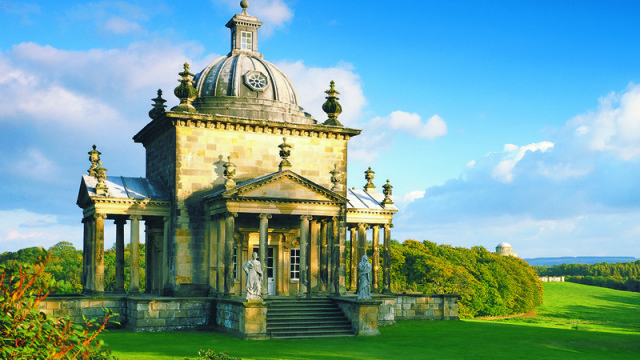
Decency Be Damned – Writing Workshop – Yorkshire – June 2025
Vlad dracula expedition – romania – halloween – 2024.

The Mountain Men Who Don’t Exist in Kyrgyzstan
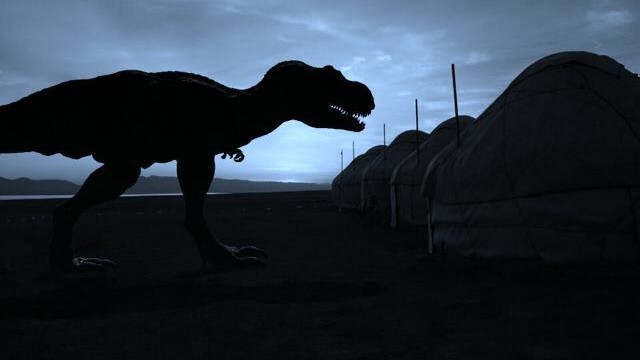
Mare’s Milk, Mountain Bikes, Meteors & Mammaries

Hunting for Ghost Ships in the Desert of Kazakhstan – radio interview

Bullfighting Buddhists or Backwards Bumpkins in Peru
Upcoming expeditions ».
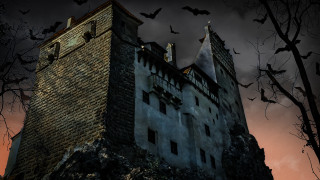
Decency Be Damned – Writing Workshop – Yorkshire – May 2024
Writers’ expeditions magazine ».

Easter Island and the Chilean with the Brazilian
Scoop & scandal, we have the dates for 2025’s dracula expedition.
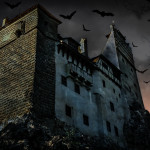
Our annual Halloween adventure across Romania (including our private dinner party on Halloween night in the room where Vlad Dracula was born inside the medieval walled city of Sighisoara, and also the Halloween party held at Dracula’s Castle in Bran) will run from October 28 through to the end of the day on November 3rd in 2025 . The full details for the Vlad Dracula Expedition will be posted here in the next couple of months. If you’d like to be added to the list to receive the information as soon as we have it, just email us at [email protected] and please CC [email protected]. Participants are already reserving their spots!
A Bit About Me

I cut my hair during the pandemic. So, if I’m meeting you for the first time, I no longer look like my old bio photos or my cartoon either. I also don’t look like my passport photo – to the point that on a domestic flight recently, airline personnel stopped me at the gate before boarding to address that I do not not look like the photo on my ID (any of my ID). I countered, “Wouldn’t a faker try to look more like the image in the passport?” The passport office in Canada, however, won’t give me a new one. My fingers are crossed that the customs agents in Panama (in a couple weeks) let me into the country.
I’m the author of Lost in Moscow (published by Turnstone Press in Canada) which CBC radio dubbed “the ultimate what-I-did-last-summer essay ever.” And I was the anthology editor of the Travelers’ Tales (USA) book Wake Up and Smell the Shit . I’ve had around 85 stories (plus my photos) published in books, magazines, and newspapers around the world.
The Writers’ Community of York Region – Open House – Free Writing Workshop – Get Creative with Nonfiction
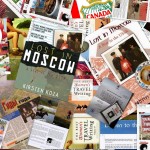
Prepare to Write Dangerously
I have been hired by The Writers’ Community of York Region (Newmarket, Ontario) to host a workshop (which is being offered to participants for free). If you are interested, you do need to register, though, as seating is limited. (CLICK HERE FOR DETAILS OR TO SIGN UP) .
Also, for anyone in the Greater Toronto Area and beyond, who is interested in joining one of my writing workshops abroad, this is a great opportunity to get a taste for one of my writing adventures, in a three-hour binge-writing gulp.
So, leave your safety nets at home and prepare to write dangerously. We’ll be employing techniques used by method actors on stage, except we’ll be using our pens on the page, in a creative exploration of making nonfiction read like fiction. You’ll be improvising through genres to find the most exciting way to present the truth and your lead character—you. You don’t have to go on an adventure to take your readers on an action-packed head trip, and during this workshop we’ll delve into those head trips.

I was interviewed by Dave Fox on The Globejotting Travel Show Expat Radio (France) about hunting for the skeletal remains of ships in the desert (that used to be the Aral Sea) in Kazakhstan. I also raved about salad in Kazakhstan (I don’t normally rave about salad anywhere – it bordered on psychotic raving, but they really do have fabulous salads in Kazakhstan). On the same trip I also got to do one of my favourite things on the planet – photograph kok-boru in Kyrgyzstan, again. That’s the nomad horse game which is a bit like rugby on horseback except they play with a decapitated goat instead of a ball. You can listen to the audio from the show from the host’s website by clicking on the audio link there, plus he has more of my pics and other info in his show notes ( CLICK HERE TO LOOK OR LISTEN ) .

IMAGES
COMMENTS
Regents Exam in ELA (Common Core) Rating Guide — Aug. '15 [61] Anchor Level 3-B The response introduces a clear central idea (The prisoner fears imprisonment, the idea of being trapped in such a dreadful place, and the unknown intentions of Count Dracula) and a writing strategy (descriptive language) that establish the criteria for analysis.The
Regents Exam in ELA Rating Guide — Jan. '20 [65] Anchor Level 3-A The response introduces a clear central idea (In this text the central idea that is portrayed is to make the most out of what you have in life) and a writing strategy (The author does well at supporting this by using the literary element tone) that establish the criteria for analysis.
REGENTS HIGH SCHOOL EXAMINATION REGENTS EXAMINATION IN ENGLISH LANGUAGE ARTS (Common Core) Thursday, August 13, 2015 — 12:30 to 3:30 p.m., only REGENTS IN ELA (Common Core) REGENTS IN ELA (Common Core) The possession or use of any communications device is strictly prohibited when taking this examination. If you have or use any communications ...
REGENTS HIGH SCHOOL EXAMINATION REGENTS EXAMINATION IN ENGLISH LANGUAGE ARTS (Common Core) Thursday, August 13, 2015 — 12:30 to 3:30 p.m., only REGENTS IN ELA (Common Core) REGENTS IN ELA (Common Core) The possession or use of any communications device is strictly prohibited when taking this examination. If you have or use any communications ...
d write your name at the top of each sheet of scrap paper.The examination has thr. e parts. For Part 1, you are to read the texts and answer all 24 multiple-. hoice questions. For Part 2, you are to read the texts and write one sou. ce-based argument. For Part 3, you are to read the text and write a text-analy.
Regents Text-Analysis Response (Task 3) The New York State English Regents which is taken in 11th grade is composed of three tasks: Reading Comprehension (Task 1), Argument Essay (Task 2), and Text-Analysis Response (Task 3). The following will help you with the text-analysis response. Text-Analysis Response Directions on the NYS Regents:
Title: Regents Examination in English Language Arts Essay Booklet Author: New York State Education Department Created Date: 7/5/2017 9:48:27 AM
REGENTS IN ELA (Common Core) The University of the State of New York REGENTS HIGH SCHOOL EXAMINATION REGENTS EXAMINATION IN ENGLISH LANGUAGE ARTS (Common Core) Wednesday, June 14, 2017 — 9:15 a.m. to 12:15 p.m., only The possession or use of any communications device is strictly prohibited when taking this examination.
Regents Exam in ELA (Common Core) — Aug. '15 [17] [OVER] Part 3 Text-Analysis Response Your Task: Closely read the text provided on pages 18 and 19 and write a well-developed, text-based response of two to three paragraphs. In your response, identify a central idea in the text and analyze how the author's use
New York State Regents Examination in English Language Arts (Common Core) Part 3 Rubric - Text Analysis. A response that is a personal response and makes little or no reference to the task or text can be scored no higher than a 1. A response that is totally copied from the text with no original writing must be given a 0. A response that is ...
The New York State English Regents is a gatekeeping exam that all students in the state must pass in order to graduate from high school. This three-part exam requires students to read, comprehend, and analyze complex texts on demand and construct written responses on the spot. Its combination of high-stakes expectations, complex tasks, and ...
Regents Examination in English Language Arts, Multiple-choice Question Scoring Key, only (81 KB) June 2023 Regents Examination in English Language Arts Regular size version (153 KB) Large type version (702 KB) Scoring Key PDF version (85.74 KB) Excel version (19 KB) Rating Guide Part 2, 6A - 4B, pages 1-27 (1.71 MB)
Questions about general administration procedures for Regents Examinations should be directed to the Office of State Assessment (OSA) at 518-474-5902 or 518-474-8220. For information about the rating of the Regents Examination in English Language Arts, contact Laura LaPan or Chris Fingland of OSA at 518-474-5902.
Wednesday-3-6-Introduction to Part 3: The Literary Analysis Essay - Workshop #1. Dracula - by Bram Stoker. Part 3: Dracula Task. Part 3 Checklist.docx. ... Complete the Part 3 Literary Analysis essay from the January, 2024 Regents exam. Friday, June 14, 2024 at 9:00AM - NYS Regents in English Language Arts
2014, Patterns, Symbols and Themes in Bram Stoker's Dracula -by Ferenc Zselyi. Bram Stoker's novel, Dracula (1897) is a discourse on the visible and the invisible, on the seemingly good and the primary evil that is, also, "good"; on the effable and the ineffable. The beautifully written end-of-the-century prose depicts horror and "disgust ...
Below are some of the key themes that could be explored in Dracula. This list is not exhaustive and you are encouraged to also explore any other ideas or themes you identify within the novel. Good vs evil. Gender roles. Science vs superstition. The fear of the unknown/the "other".
Regents Exam in ELA Rating Guide — Jan. '19 [57] Anchor Paper - Part 3 - Level 3 - A Anchor Level 3-A The response introduces a clear central idea (devotion to work can be satisfying) and a writing strategy (The author uses a writing strategy of a theme of dedication) that establish the criteria for analysis.The response demonstrates a thoughtful analysis of the
== A. Editor's Notes == This document, "The Historical Dracula", was originally authored by Ray Porter and dated April 30, 1992.According to Mr. Porter, it first appeared as a contribution to the LISTSERV FAQ Vampyres List on the public IBM VM Mainframe host at Georgetown University - "vampyre-l@guvm". I first encountered this essay in the spring of 1995 on the "Vampyres Only" homepage.
The Time of Troubles ( Russian: Смутное время, romanized : Smutnoye vremya ), also known as Smuta ( Russian: Смута, lit. 'troubles'), [ 1] was a period of political crisis in Russia which began in 1598 with the death of Feodor I, [ 2] the last of the House of Rurik, and ended in 1613 with the accession of Michael I of the House ...
We have the dates for 2025's Dracula Expedition. By Kirsten Koza on April 29, 2024. Our annual Halloween adventure across Romania (including our private dinner party on Halloween night in the room where Vlad Dracula was born inside the medieval walled city of Sighisoara, and also the Halloween party held at Dracula's Castle in Bran) will ...
Regents Exam in ELA Rating Guide — June '22 [69] Anchor Level 4-B The response introduces a well-reasoned central idea (Flegg undertakes an extremely dangerous challenge, to prove his strength and determination to his friends and to himself) and a writing strategy (The author uses simile … to connect the gasometer to different objects, to help the reader to imagine the struggle of
My own essay analyzes Lissitzky's synthesis of the rational and irrational in a theoretical commentary on Lissitzky's treatise and manifesto Art and Pan-Geometry. Another side of the movement away from the post-Revolutionary avant-garde toward the consistent development of socialist art was the romanticism of the late 1920s and1930s.
Regents Exam in ELA Rating Guide — v202 [63] Anchor Paper - Part 3 - Level 4 - A Anchor Level 4-A The response introduces a well-reasoned central idea and a writing strategy (Finnegan uses metaphor to convey the central idea that surfing is a highly emotional discipline) that clearly establishes the criteria for analysis.